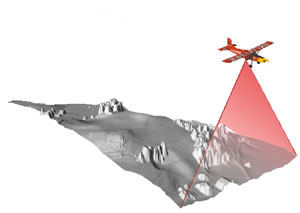NSGold Starts Drill Campaign At Mooseland to Expand its Current Resource Estimate
NSGold Corp (NSX – $0.52) started a new 5,000 meter drilling program at its 100% owned Mooseland Gold property in Nova Scotia. Fifteen holes are planned, but one or two additional ones may be drilled when required. To help the geologists find additional drill targets, a LiDAR survey was conducted of which the first results are expected in early September.
Expanding Resource Estimate
In June of 2011, an NI 43-101 compliant resource estimate was published for Mooseland with an inferred gold resource of 390,000 ounces of gold. This estimate was based on drill core assay results from NSGold (26 holes) and the previous owners of Mooseland, Hecla Mining and Azure Resources (141 holes).
Although 390,000 ounces of gold was a solid result, it was clear that there was lots of room for expanding that resource estimate because NSGold’s 26 holes drill program in 2010 was only designed to confirm the historic data from previous owners and to get a better understanding of the property. So no holes were drilled outside known ore zones defined by earlier programs.
This campaign will be different. Apart from 1 or 2 infill drill holes and 2 holes that were planned last year, but couldn’t be drilled due to adverse weather conditions at the time, most of the new holes will be testing promising areas of Mooseland that have been sparsely drilled or unexplored in the past. Drilling is expected to last about two months.
LiDAR
LiDAR (Light Detection And Ranging) is an optical remote sensing technology that can measure the distance to a target by illuminating it with light, often using pulses from a laser. LiDAR can be applied in geomatics, archaeology, geography, geology, seismology, forestry and contour mapping.
At NSGold’s properties, LiDAR is being used to determine the proper structure of the known gold bearing systems and to potentially identify additional structures for future exploration. Here, the technology allows the geophysisists to produce highly detailed topographical maps within an accuracy of up to 20 mm (0.79 inch). The delineating of these structures will significantly save time and money to NSGold’s geologists as they will be better able to position drills and identify the location of new targets with increased accuracy.
Subsurface structures usually show up on the surface to some extent,and on the highly accurate LiDAR maps you can actually see the projection of these structural changes on the outcrop surface, which you typically can’t see when you’re walking on the ground.
LiDAR can’t replace actual drilling, but it is a tool that will allow the Company’s geologists to make better decisions about prospective zones, including where to drill, and like any remote sensing technology depends upon the interpretation of experts in the field to be effective. The first LiDAR results for Mooseland are expected in early September. This is ideal timing as the drill will still be on site and may be moved to a high potential area.
NSGold will also receive LiDAR contour maps on its other Nova Scotia projects including Cheticamp, Indian Path, Ecum Secum and Moosehead.
Conclusion
NSGold continues to execute its program as scheduled. Because previous drilling results indicate that the vein systems at Mooseland continue beyond the known zones, there’s a very good chance that more mineralized veins will be discovered in the unexplored areas.
In prospective areas that have not been explored, LiDAR is expected to show if there are any structures that are worthy of further exploration and possible drilling or trenching to evaluate the underlying rock. This means that what to date have been properties of unknown potential in Nova Scotia may soon become high priority prospects.
| For important disclosures, please read our disclaimer. |

